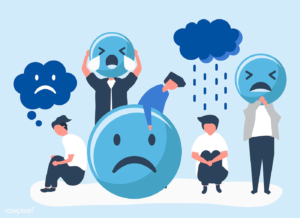READING PASSAGE 1 – Volunteer Opportunities for Redux, Inc. Employees
Questions 1 -7
Read the text below and answer Questions 1—7.

You can give back to the community through the company’s Volunteer Program. By signing up for the program, you can spend up to five hours a month of company time volunteering in an approved community program. This program is open to all Redux, Inc. employees. The following opportunities are currently available:
A
Nursing home residents are usually unable to get out to see plays, movies, and concerts. They count on your generosity to bring entertainment to them. Do you like to perform? Do you have a special talent that’s just waiting for an audience?
An appreciative audience is guaranteed if you can give just one afternoon a week to share your special talent with these special people.
B
The Citizen’s Park Cleanup Committee needs more help. Committee members spend the last Saturday of each month at a different city park, picking up trash, repairing equipment, pulling weeds, and planting flowers.
C
Mayfield Elementary School needs people to help with their afterschool program. Volunteers will tutor children in reading and math. Must be able to commit to one afternoon a week for the entire school year.
D
The Mayfield Free Clinic is open every weekend and is looking for people willing to spend two days a month assisting the clinic staff. Volunteers will complete patient intake forms, educate the patients about clinic services, and provide assistance contacting other medical providers.
E
The Mayfield Shelter serves hot dinners to the homeless every evening. The shelter needs volunteers to help with preparing and serving meals. If you can volunteer one evening a week, the shelter needs you.
Questions 8 -14
Read the text below and answer Questions 8—14.
Summer Classes at the Community Center
The Community Center is offering adult summer classes again this year. The schedule includes classes in basic computer skills, martial arts, painting and drawing, and dance.
Registration
There are two ways to register for classes:
1. Go to our website: www.cc.org/classes/winterschedule. Click on “Class Descriptions” to see a full listing of the classes that are available this winter. Decide which class or classes you are interested in.
Then click on “Register Now” and a registration form will appear.* Complete the form and calculate the amount of money you owe. This will include the cost of your classes plus a $15 registration fee. Any materials fees will be payable to the instructor on the first day of class. In addition, if your address is outside of the city, you will pay a nonresident fee of $25 per class.
Fill in your credit card information and click “Send Now.” You will receive registration confirmation by e-mail.
2. If you do not have access to a computer, you can call the Community Center at 872-555-5068 to request a class catalog and registration form. Select your classes from the catalog, complete the form, and return it by mail with your check or credit card information.
Withdrawal Policy
Full refunds, minus the $25 registration fee, will be given for any withdrawals made up to one week before the class begins. Withdrawals made before the start of the second class will receive a 50 percent refund, minus the registration fee. No refunds will be made after the start of the second class.
Classes offered by the Community Center are for adults only. You must be eighteen years of age or older to participate. Classes for children and teens are offered through the City Department of Recreation.
READING PASSAGE 2 – The Murgatroyde Corporation Employee Manual
Read the text below and answer Questions 15—20

Chapter 8: Professional Development Requirements
All employees of the Murgatroyde Corporation are required to attend fifteen hours of professional development workshops or classes in each calendar year. While there are many opportunities provided by the company, professional development hours can also be earned externally at local training centers, colleges, and other locations.
Listings of upcoming professional development opportunities offered by the company are posted on the company website and updated frequently. Employees can register for these workshops online. Before signing up for a particular workshop, employees should check with their supervisors to make sure they can be excused from their duties on the date of the workshop.
Employees who wish to receive professional development credit for attending workshops or courses offered elsewhere should provide their supervisor with materials describing the opportunity. The supervisor will determine whether the workshop or course is pertinent to the employee’s work. After obtaining the supervisor’s approval, the employee can apply to the Human Resources Office for tuition reimbursement if tuition is to be paid.
Employees attending any workshop offered by the company will receive a certificate of attendance. The number of professional development hours earned will be reported to the Human Resources Office by the workshop organizer. In order to receive professional development credit for a course or workshop offered outside the company, the employee must have the workshop organizer complete a company Proof of Attendance form, and the employee must then submit the form to the Human Resources Office within one month of the end date of the course. Timely submission of this form is required in order for credit to be granted. There are will be no exceptions.
Questions 21 -27
Hampford College
Work-Study Program
Certain students at Hampford College may be eligible for the college Work—Study Program. To determine eligibility and to apply for the program, read the information below.
* The Hampford College Work—Study Program is open to all full-time Hampford College students, regardless of the particular study program in which they are enrolled. The program is not open to part-time students. Information on financial support programs for part-time students is available in the Counseling Center.
* Before applying for a work—study position, the student must demonstrate financial need. To do this, complete the Statement of Financial Need Form, available in the Counseling Center.
* To apply for a work-study position, submit a letter of interest to the Work-Study Program Office, describing your skills and interests. You may also, but are not required to, submit a resume describing any previous jobs you may have held. Students both with and without an employment history are eligible for the program.
* Once you have been approved for the program, look at the help-wanted ads posted on the Counseling Center website. All of the jobs are located at the college. You may apply for any job that you are interested in. Please note that job placement is subject to job availability. While we make every effort to place all Work-Study Program students in a job, there are no guarantees.
* All work-study students must be students in good standing at the college; that is, they must receive passing grades in all their courses in order to continue in the program the following semester.
* Work-study positions are generally for one year. Students wishing to continue in the program after one year must resubmit their applications.
READING PASSAGE 3 – Seasonal Affective Disorder

A
When fall days shorten and winter is around the corner, many people start to feel sluggish, moody, antisocial, or irritable. Like bears, they may feel as though they want to hibernate for the winter. But these symptoms may be more than the winter blues; they could indicate seasonal affective disorder (SAD). This is a form of depression that appears in the early fall and lasts through the first month or so of spring. It is triggered by the shortened daylight of the colder months and then dissipates as the days get longer and the warmer months approach.
B
Because a decrease in the number of daylight hours is a significant contributor, geographic location is an important factor in the incidence of the disorder. Residents of Canada and the northern United States, for example, are eight times more likely to suffer from SAD than are residents of sunny regions of the southern United States and Mexico. SAD is also more common in countries in arctic latitudes, such as Finland, where the rate of SAD is nearly 10 percent. It is seldom found in countries within 30 degrees of the equator, where there are long, constant hours of sunlight throughout the year.
C
As with other forms of depression, serious SAD may be accompanied by suicidal thoughts. One study of suicides in Japan examined a multitude of variables for each suicide, including hours of sunlight in the latitude, temperature, and economic factors, among others. Researchers found that yearly total sunshine was the only individual variable that correlated to a significant difference in the suicide rate. Thus, the study suggested that one’s latitude can have a significant effect on mental health and even on tendencies toward suicidal thoughts.
D
SAD usually begins in adults between the ages of eighteen and thirty, and it is four times more prevalent in women than men. The disorder also tends to run in families. Some people suffer debilitating symptoms that interfere with interpersonal relationships and careers. Others with SAD experience mild symptoms. For people with this milder version of SAD, the winter may bring increased sadness or irritability, but they remain fully functional.
E
SAD’s symptoms include many that are common in other forms of depression. SAD sufferers, like people who suffer from depression, experience fatigue, decreased levels of energy, and difficulty concentrating. Increased appetite, especially a craving for carbohydrates, and weight gain, as well as an increased need for sleep and a desire to be alone are other common symptoms of depression that are seen among SAD sufferers as well.
F
The exact mechanism causing SAD is not known, but some researchers theorize that SAD is related to hormonal changes. One theory is that reduced sunlight during fall and winter leads to reduced production of serotonin, a neurotransmitter with a calming effect, in the brain. Low levels of serotonin are associated with many forms of depression and can manifest in symptoms such as fatigue, carbohydrate craving, and weight gain. Because high-carbohydrate foods, such as chips, pretzels, and cookies, boost serotonin, experts believe they have a soothing effect on the body and mind.
G
Others believe SAD is caused by the hormone melatonin, which is related to the body’s circadian rhythms and can cause drowsiness. Plentiful light decreases the secretion of melatonin in the brain. However, during shorter and darker days more melatonin is produced, causing lethargy and other symptoms of depression.
H
The most common treatment for SAD is light therapy, in which patients expose themselves to full-spectrum lights, usually twenty times brighter than normal room lights, for fifteen to sixty minutes a day. Light helps to decrease the amount of melatonin and boost the serotonin in the brain. Thus, light therapy has an antidepressant effect. Sometimes, light therapy is used in combination with antidepressant medication and individual psychotherapy.
I
Experts also recommend some lifestyle changes that help to prevent SAD. People who have a tendency to suffer from SAD are encouraged to go outside every day during the winter months and to exercise regularly. Eating a well-balanced diet with plenty of vitamins and minerals is also important. Social support is extremely important for those with depression, so maintaining an active social life and regular activities is also recommended. For patients who use a light box, it is recommended to start using it in the early fall, before SAD symptoms appear.
J
Although some aspects of SAD are still being researched, experts agree that people who think they are suffering from SAD should see a doctor immediately. They do not advise using light therapy or any other treatment without the supervision of a physician.
You need to be registered and logged in to take this quiz. Log in
